The Uros Islands and the Uru Communities on Lake Titicaca are a testament to human creativity and adaptability in harsh conditions. Despite facing numerous challenges from nature and modern society, the Uru people have preserved their distinctive cultural traits while being willing to adapt to survive and thrive.
Situated at an altitude of nearly 3,810 meters above sea level, Lake Titicaca is the highest navigable freshwater lake in the world, located in the Andes mountain range and straddling the border between Bolivia and Peru. Here, the Uru have constructed a cluster of about 120 floating islands near the city of Puno, and they continue to expand by creating new islands.
The origins of the Uru people can be traced back over 3,500 years, connecting to the ancient Pukara culture. According to legend, the Uru call themselves “Lupihaques” or “sons of the sun,” and they consider themselves the original owners of Lake Titicaca. They believe their distinct bloodline protects them from the extreme cold of the high-altitude region.
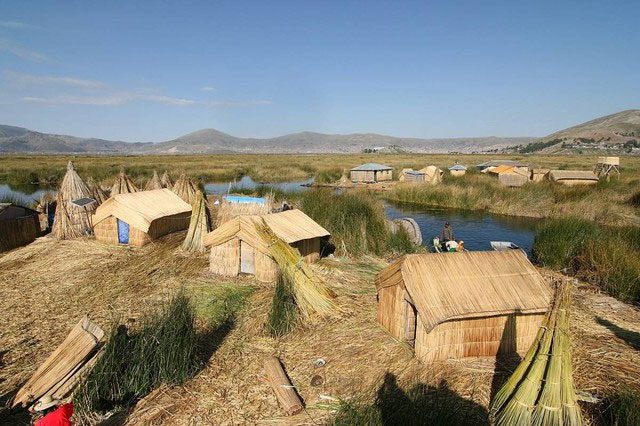
Houses built on Lake Titicaca.
The history of the Uru people remains shrouded in mystery, but one theory suggests they began constructing floating islands as a defensive measure against threats from powerful empires like the Incas. Creating mobile settlements allowed them to move to safer areas on Lake Titicaca, helping maintain a peaceful lifestyle and avoid conflicts.
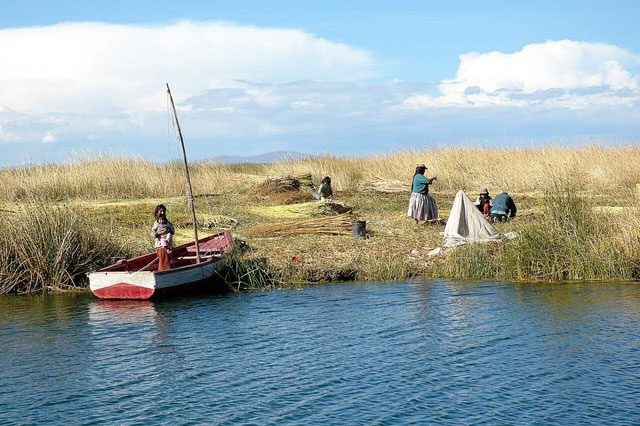
Mobile settlements of the Uru community on Lake Titicaca.
At the heart of Uru culture is the totora reed, an aquatic plant abundant in the shallow regions of Lake Titicaca. The Uru harvest this reed and use it for nearly every aspect of their lives: building islands, homes, making boats, producing crafts, fuel, and even food.
The islands are constructed by layering totora reed roots and bulrushes on top of each other, creating a floating surface approximately 1-2 meters thick. To maintain the islands, the Uru continually add new layers of bulrush on top, especially during the rainy season when the lower layers decompose faster than usual. Large blocks of totora roots naturally float to the surface, which are tied together to form the foundation of the island, with dried reeds piled on top in alternating directions.
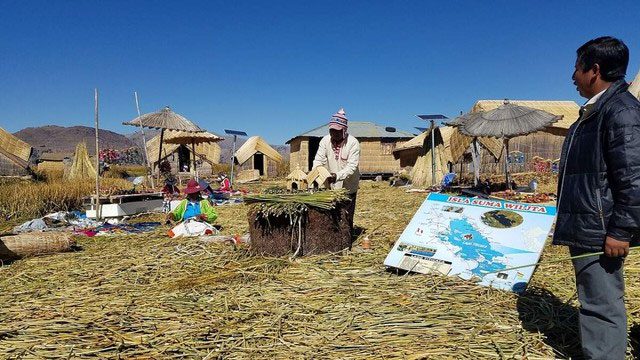
Uru people harvesting totora reeds and using them for most aspects of life.
To prevent the islands from drifting freely, the Uru utilize eucalyptus poles and ropes to anchor them to the lakebed. A typical island can house between two to ten families and may last around 25 years before needing a complete rebuild.
Traditional homes on the islands are primarily made from totora reeds, although some modern houses have metal roofs for better protection against harsh weather. Smaller islands are designated as restrooms located near the main living areas. Many modern islands even have solar panels to power lights, TVs, and other modern devices. The Uru have even established an FM radio station to broadcast music and information to the community.
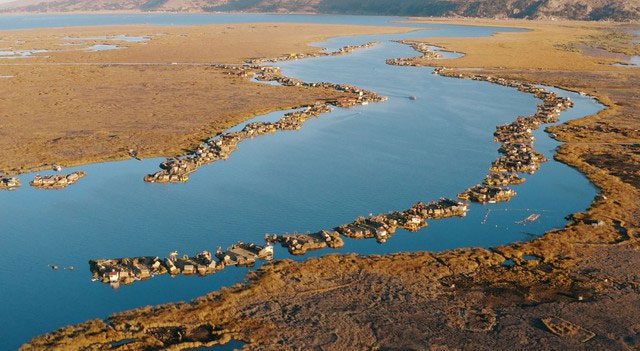
Lake Titicaca.
The totora reed is not only used for construction but also serves as an essential source of food and medicine. The soft white stalk of the reed, known as “chullo”, is consumed by the Uru to supplement iodine, helping prevent goiter. When in pain, they may wrap bulrush around the sore area, and the white part of the reed is also used to cool or alleviate nausea. Additionally, tea made from totora flowers is an important part of the Uru diet.
Currently, fishing remains the primary means of subsistence for the Uru, with species such as trout and catfish being common catches. The Uru also domesticate waterfowl to assist with fishing and egg harvesting. Some islands maintain small fish ponds. To control rat populations, many families keep cats as pets.
Although the Uru have tried to maintain their traditional lifestyle, they have experienced significant changes in recent decades. A major storm in 1986 forced many islands to be rebuilt closer to shore, resulting in increased interaction with modern society and creating new economic opportunities through tourism.

Uru people increasing income by offering boat tours.
Today, the Uru increase their income by offering boat tours and selling handicrafts to tourists. However, the Uru population has significantly declined, with many young people leaving the islands to pursue education and jobs on the mainland. Currently, only about 1,200 Uru live on the Uros Islands, spread across 60-70 artificial islands, a stark contrast to their former territory that spanned across Lake Titicaca. The Uru language has also gradually disappeared, replaced by Aymara and later by Spanish.
The remaining Uru are still striving to preserve their cultural heritage while adapting to the changes of the modern world. Children receive elementary education on islands with schools, while older students must travel to the mainland for secondary and higher education. The islands today are equipped with modern amenities like solar panels and even motorized boats alongside traditional totora reed boats.
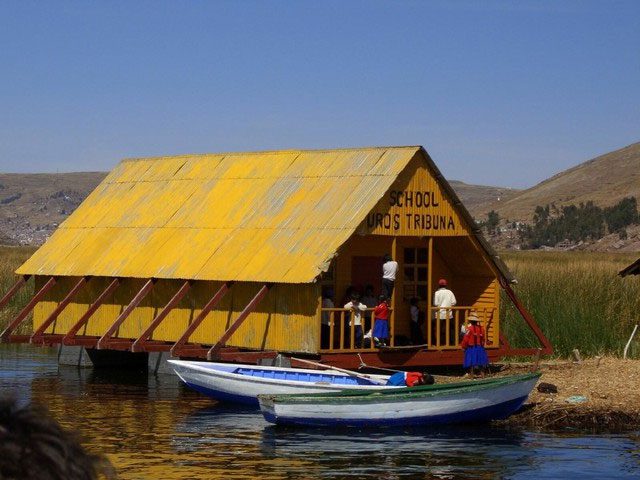
The remaining Uru are still striving to preserve their cultural heritage.
For visitors, the Uros Islands offer a unique cultural experience. Day tours from Puno allow tourists to explore these incredible reed islands, learn about traditional building techniques, try on local costumes, and ride on reed boats. Some tours even provide the opportunity to stay overnight with an Uru family, enabling travelers to gain a deeper understanding of daily life on these unique floating islands.


















































